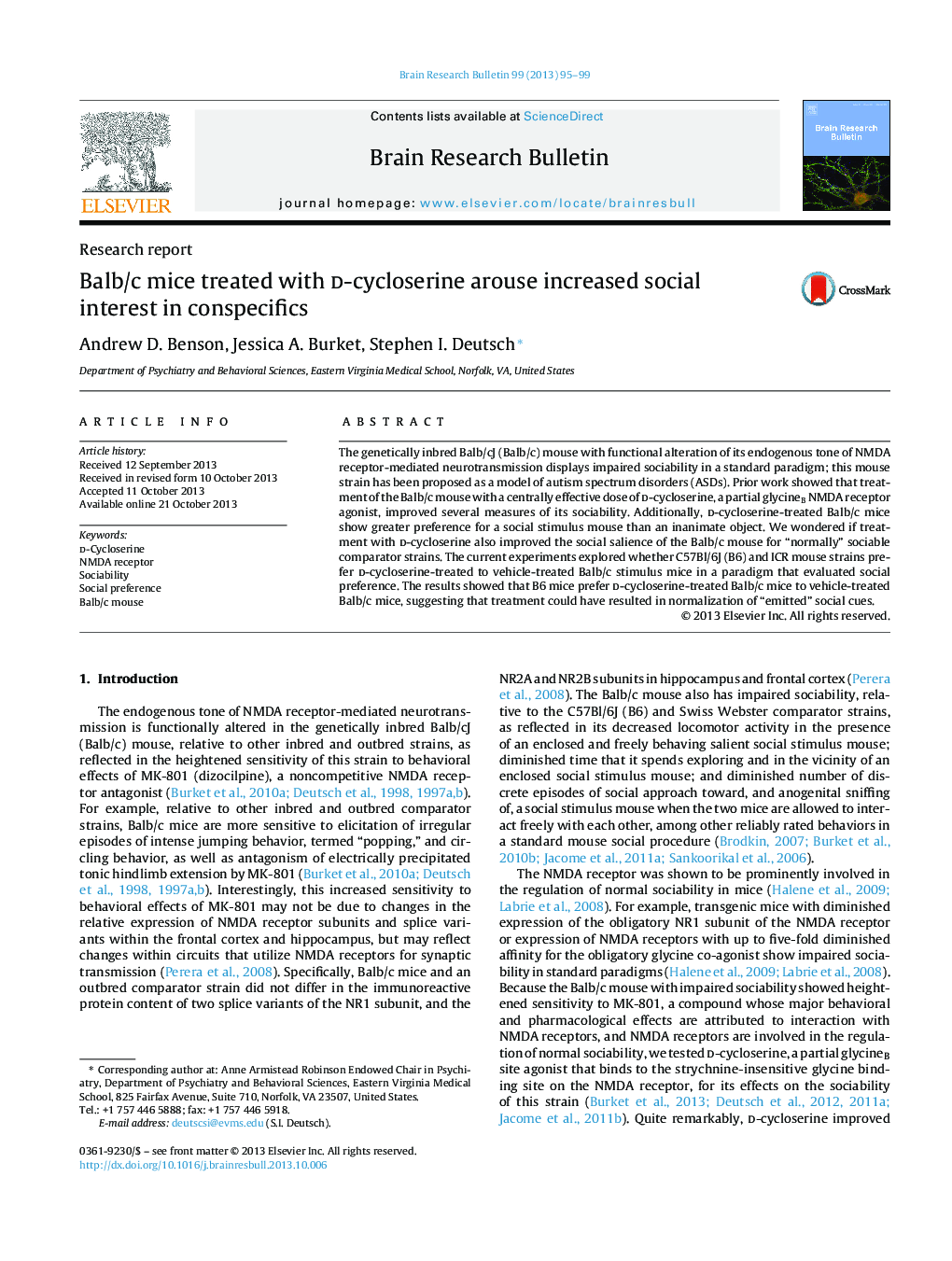| Article ID | Journal | Published Year | Pages | File Type |
|---|---|---|---|---|
| 4318888 | Brain Research Bulletin | 2013 | 5 Pages |
Abstract
The genetically inbred Balb/cJ (Balb/c) mouse with functional alteration of its endogenous tone of NMDA receptor-mediated neurotransmission displays impaired sociability in a standard paradigm; this mouse strain has been proposed as a model of autism spectrum disorders (ASDs). Prior work showed that treatment of the Balb/c mouse with a centrally effective dose of d-cycloserine, a partial glycineB NMDA receptor agonist, improved several measures of its sociability. Additionally, d-cycloserine-treated Balb/c mice show greater preference for a social stimulus mouse than an inanimate object. We wondered if treatment with d-cycloserine also improved the social salience of the Balb/c mouse for “normally” sociable comparator strains. The current experiments explored whether C57Bl/6J (B6) and ICR mouse strains prefer d-cycloserine-treated to vehicle-treated Balb/c stimulus mice in a paradigm that evaluated social preference. The results showed that B6 mice prefer d-cycloserine-treated Balb/c mice to vehicle-treated Balb/c mice, suggesting that treatment could have resulted in normalization of “emitted” social cues.
Related Topics
Life Sciences
Neuroscience
Cellular and Molecular Neuroscience
Authors
Andrew D. Benson, Jessica A. Burket, Stephen I. Deutsch,
